Big tire upgrades are the most effective way of increasing ground clearance. This is especially important for overcoming obstacles in an off-road situation since your axles will be higher off the ground. There are however a few limitations, especially when it comes to IFS (Independent Front Suspension) 4WD trucks. SFA (Solid Front Axle) trucks suspension geometry is a lot less complex and thus much easier to upgrade.
Most trucks can accommodate a 33” tire without a lift kit. Trimming of fender liners and wheel arches combined with adjustments to torsion keys might be necessary on most IFS (Independent Front Suspension) trucks. Fitting wheel spacers and 2” leveling kits will improve the clearance from the UCA (Upper Control Arms).
In most cases fitting a 2” levelling kit is the most economical way to gain clearance for larger tires. It’s also the most popular.
Table of Contents
The minimum requirement for fitting larger tires varies from truck to truck. Also, if you have an Independent front suspension truck you are somewhat limited to how big you can go versus a truck with a Solid Front Axle or live front axle setup. Most IFS trucks and SUV’s can get away with a 33” tire without much drama and some small modifications, as you will see below.
Before embarking on this exercise, you need to determine what your main application with the truck will be. Are you planning on doing extensive off-roading, towing, hauling or overlanding? Perhaps the tire upgrade is purely for aesthetics reasons. Do you want to squeeze the biggest tire possible on your truck in the most economical way? Is limited practicality not a concern?
Let’s see what your options are.
In many modern IFS trucks a (33.3”) or 295/70 r17 combined with a 1.75-2” levelling kit is the absolute largest size tire you can fit. In addition, you need a minimum +9 offset rim for improved clearance at the UCA. Anything less than that and you’ll have to opt for a narrower tire like a (32.7”) or 285/70/17 before you start running into clearance issues with the body panels.
Anything less than that and you’ll have to opt for a narrower tire like a (32.7”) or 285/70/17 before you start running into clearance issues with the body panels.
This is just a general guideline and will vary between trucks.
When you opt for a 4” leveling kit your upgrade options are much larger. Depending on the truck suspension, if it’s an IFS, you’ll need to fit a diff drop kit to bring the CV angles back down so as to minimize the chances of eating CV’s every time you venture off-road. With a 4” lift you’ll need to adjust torsion keys, if applicable, and fit an aftermarket adjustable UCA to be able to set your caster angles properly. Also, don’t forget to upgrade your bump stops too to prevent scrubbing at maximum compression when flexing off-road.
A 315/70/17 or 34.4” tire will fit nice and snug provided you’ve opted for an aftermarket rim with a more positive offset for improved clearance away from the UCA. Trucks with Sold Front Axles can easily accommodate a larger 35” tire without much trimming in the form of 35X11.5R18 or 35X12.5R18. If your truck has front crash bars you will need to have these removed for better clearance up front. More about that here.
Trucks with Sold Front Axles can easily accommodate a larger 35” tire without much trimming in the form of 35X11.5R18 or 35X12.5R18. If your truck has front crash bars you will need to have these removed for better clearance up front. More about that here.
In most cases with IFS trucks, a 2” to 2.5” lift and some trimming of fender liners will accommodate a 33” tire. Most SFA vehicles will accommodate a 33’’ tire with minimum body and fender modifications.
Click here to learn more about the crucial modifications when fitting 33” tires, and the minimum lift requirement necessary for a successful upgrade.
Most modern 4WD trucks like Ranger’s, Tacoma’s and Colorado’s have a lot of safety features built into the framework and chassis which causes complications when installing bigger tires.
In the case of the 3rd Gen Tacoma, the body mount protrudes out quite a bit which restricts you from fitting oversized tires without, (A) either buying an aftermarket body mount or (B) cutting, welding and painting the existing mount. This is quite a job and if you are not familiar with grinders and welding machines, then rather leave it to a professional custom shop.
This is quite a job and if you are not familiar with grinders and welding machines, then rather leave it to a professional custom shop.
Then you have the front crash bar mounts as in the case of the modern Ford trucks. These restricts the wheels at full lock with oversized tires so you’ll need to remove them completely or cut it away to create more clearance. Click here for the full breakdown of fitting bigger wheels to a Ford Ranger
The biggest tire you can fit to a Ram 2500 is a 35×12.5”. This will allow full lock-to-lock turning abilities without rubbing as well as full articulation and droop.
The above mentioned tire is for the radius arm Ram trucks from 2014 to present 2500’s and the 2013 to present 3500. The fitment guide in this article is not to determine how much you can get away with, however it’s aimed at fitting the biggest tire possible without losing any practical application on the truck.
Click here for a deeper dive into the technical requirements
The biggest tire you can fit on a stock CHEV or GMC 3500 is a 295/65R18 on the factory stock wheels at stock ride height.
GM designed the front IFS suspension on the 3500 to be slightly adjustable by manipulating the torsion bars. This will allow you to fit a larger tire without much scrubbing at full turn and at full compression. This is good news, however, be warned that when you start fiddling with the torsion bars, you start altering the geometry of the IFS suspension, which includes changing the angles of the CV joints, upper & lower ball joints, and the tie rods.
With that being said, let’s see what the max tire size you can fit on a stock 3500 with/without a lift kit.
The biggest tire you can fit on a 2021 GMC AT4 running factory stock suspension and rims are a maximum of 34.8-inches. This equates to a 285/75R18 (34.8”) or 305/60R20 (34.4”) with no trimming or rubbing.
If you are not prepared to do trimming and cutting and you are running stock suspension then you’ll be limited to a maximum of 34.8-inch tire, depending on the tire brand of course. The up side, there are many other alternatives you can try in both 18” and 20”.
The up side, there are many other alternatives you can try in both 18” and 20”.
Let’s now look at exactly what is required to make the biggest tires fit, as well as some of the most popular tire and suspension combinations guys have done with 100% success.
The biggest tire you can fit on a 2014-current GMC Sierra 1500 running factory stock suspension and rims are a maximum of 32.6 inches.
If you are not prepared to do trimming and cutting and you are running stock suspension then you’ll be limited to a 32.5-inch tire, depending on the tire brand of course. The up side, there are many other alternatives you can try.
Let’s now look at exactly what is required to make the biggest 33-inch tires fit, as well as some of the most popular tire and suspension combinations guys have tried with 100% success.
The maximum size on the Tundra is a 295/70/R18 or 295/60 in a 20 inch with a +18 to +20 wheel offset, on a 9-inch wide wheel.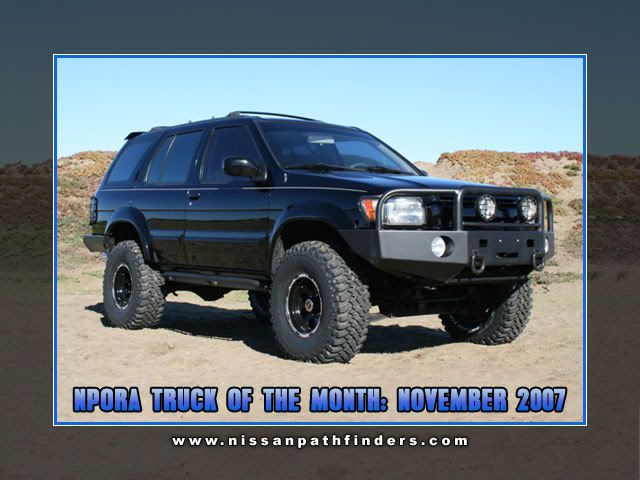
Now that we know the max tire size on a stock Tundra, let’s dive deeper into the actual fitment and later look at the biggest tire size you can fit with a 3” and 6” lift kit! or if you want to know what is required to fit 33″ tires on a Tundra without a lift then read this.
The largest tires you can fit on a stock F150 without removing the crash bars are 33”- 34” without severe rubbing. Alternatively, you can fit 32” if your rims are 10” wide.
If you deice to go the biggest tire you can squeeze inside the wheel arch, keep in mind you will experience a drop in MPG, but nothing too significant unless you go 37” or bigger. If you opt for a more aggressive AT or MT tire, you will experience increased road noise inside the cabin. In most cases, the more aggressive, the noisier.
Then there is the issue about the crash bars on all modern Fords. We’ll look at what that’s all about, and if you should remove them when trying to fit oversized tires?
The biggest tire you can fit without any additional modification is a 35”. If you are prepared to do a bit of body trimming
If you are prepared to do a bit of body trimming
At the end of the day you still want all the practicality of your truck and your tire size upgrade should enhance your trucks abilities and capability, not detract from it. You still want full articulation and droop with maximum suspension travel.
So let’s get into it and see exactly what’s required when fitting bigger tires on your Ram 1500 with a stock suspension.
Fitting 35” tires to a 3rd Gen Tacoma requires a bit of body mount modifications as well as wheel arch trimming. You will require a minimum 2.5” lift, negative offset (-12) rims, and you’ll need to do some additional body modifications, such as cutting and welding of the body mounts and bending away of the pinch weld.
On the rear, it’s a straightforward fit with no clearance issues. You can get full tuck on the rear without any hassles. You can trim the wheel arch for improved clearance, however you will lose your wheel arch liners.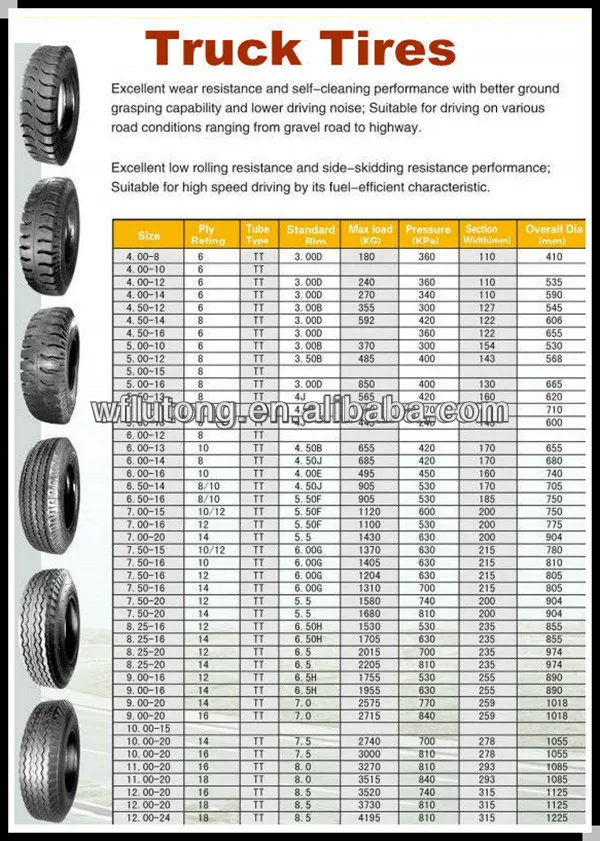
Also you need to remember the front wheels don’t only move left and right when turning, but there’s also some forward and backward movement. This is why you get scrubbing at full lock when turning and why it’s necessary to do CMC’s and trimming of the pinch weld.
Click here to read the full breakdown of fitting 33” tires to a 3rd Gen Tacoma
If you want to fit a larger 33” tire without a suspension lift, there is some modification needed. The Ranger T6 crash bars protrude from the wheel well and the bigger 285/70/17 tire makes contact. These will need to be removed/modified first so as not to damage the new tires. They are quite a PITA to remove so be prepared. Once removed, and a 20+ offset aftermarket wheel is fitted you should be able to get the 33” tires to fit comfortably.
Click here for the full breakdown of fitting bigger wheels to a Ford Ranger
33-inch tires can be fitted to a stock Jeep Wrangler JK, but with minimum clearance on the front bumper and not enough clearance for full articulation off-road.
Before running out and fitting bigger tires to your JK, make sure you understand all the implications and that there are other factors that comes into play such as backspacing, clearance, fuel economy, handling and more.
To take full advantage of the Jeeps legendary articulation, you would do well to fit a 3-4” lift before fitting 33” tires.
Click here for the full breakdown of fitting 33” tires to a Jeep Wrangler
Not all FJ Cruisers are created equally, so certain model FJ’s might rub on a 33″’s, running a stock suspension while others won’t. What could be an influencing factor is the tire itself. So it’s also safe to say, not all tires are created equally i.e. mold, width, etc. So they are not all made to exactly the same measurement.
So, the biggest tire you can safely fit on an FJ without body scrub or requiring any chops is usually a 275/70/17. That will be on the stock tires, stock rims, no lift, no chop, and no spacers. Anything over and above this requires a body chop and a small 2” lift.
Click here for the full breakdown of fitting 33” tires to a FJ Cruiser
The biggest tire you can fit on a Chevy Colorado with stock suspension and stock rims are 265 65 17’s. They will fit without any rubbing problems, and no trimming or additional modifications are required to make them function properly.A 2” to 3” lift kit is the recommended option if you are planning on using the vehicle for off road use or overlanding applications. You will achieve the best off road off-road capability, ride comfort, as well as load carrying ability with this option, running 33” tires. Load carrying ability is of vital importance when doing overlanding, since you are carrying gear, storage, fuel, water, shade. Rooftop tents, recovery gear and more.
Click here for the full breakdown of lifting a Chev Colorado
The largest size you can fit on a Nissan Frontier with a stock suspension is 265/75/16. This size does not cause any rubbing or requires trimming of fender liners.The 265/75/16 is the largest size you can fit, even with a 2.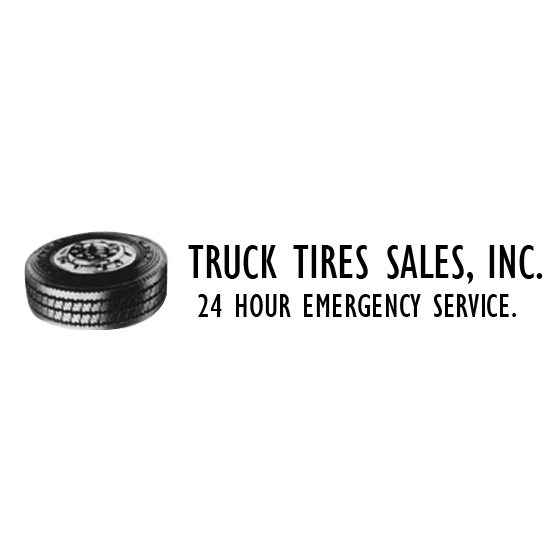 5″ spacer. It is also the largest tire that can fit on the stock wheels without any additional modifications needed. That size is just short of 32” and measures exactly 31.6 inches. If you fit an aftermarket rim with a more negative offset, you run the risk of the wheels scrubbing and hitting the fenders at full lock and full compression.
5″ spacer. It is also the largest tire that can fit on the stock wheels without any additional modifications needed. That size is just short of 32” and measures exactly 31.6 inches. If you fit an aftermarket rim with a more negative offset, you run the risk of the wheels scrubbing and hitting the fenders at full lock and full compression.
Click here for the full breakdown of the biggest tire you can fit on a Nissan Frontier
We have mentioned quite a few variables to consider before dropping a load on expensive oversized tires. You should first determine what the primary application for the upgrade is. Is it purely for aesthetics or will you need maximum practicality, off-road ability, while maintaining maximum articulation?
One of the easiest and most effective changes that an automotive enthusiast can do to change the look and personalize their ride, is to change the tires. With the help of Toyo Tires I find out how to determine an appropriate size tire for the vehicle, which is not always easy when you’ve already decided not to stick to the factory size.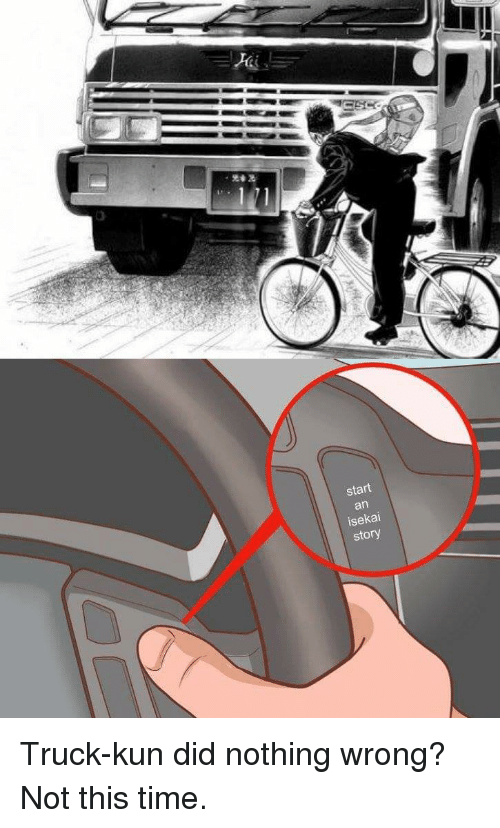
There are several questions that need to be answered to help steer you to the correct tire for your application. First, you need to identify the intended use of the vehicle. This will help direct you to a highway tire, all-terrain, hybrid or mud terrain tire. Next, you set targets for overall size and chose a tire that will fit the vehicle and more importantly, safely caries the load the vehicle was designed for.
Picking a tire for a new vehicle can be a stressful situation, but with the help of Toyo Tires’ Right Sizing that decision just became easier.
The last thing anyone wants is to pull out of the tire shop, turn on to the road and hear rubbing. I had the chance to speak with Todd Bergeson, light truck tire product manager at Toyo Tire USA Corp. to get an understanding of how to pick the right tire. Choosing the correct tire for a new vehicle, among all the choices out there, can seem overwhelming, but with the help of Toyo Tires’ Right Sizing options, that decision just became easier.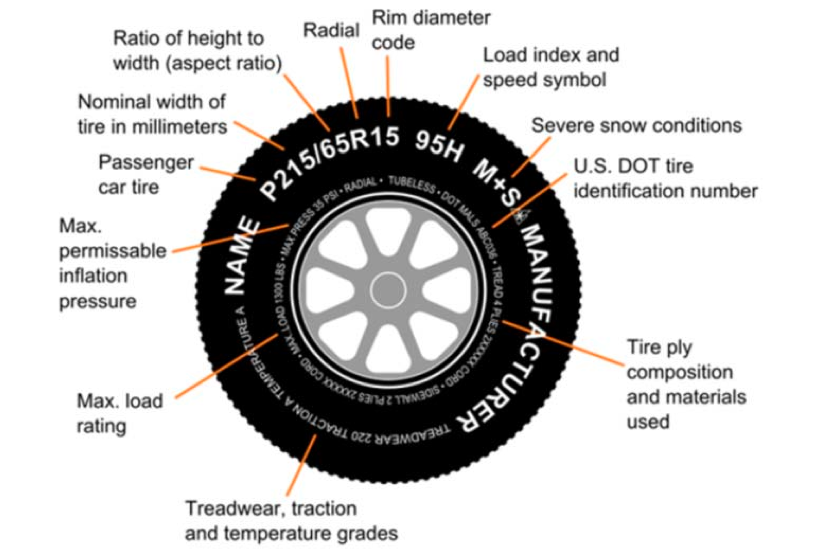
“Toyo has been working hard to come up with viable solutions to allow consumers to achieve the look, size, and performance they dream of, with a tire that is properly load rated for their vehicle,” Bergeson explained. “We have come up with the nomenclature ‘Right Sizing,’ and it refers to Toyo producing a tire that is engineered for the application it is intended for. Toyo is now producing ‘Right Sized’ tire options in the Open Country A/T II all-terrain tire for various SUVs, pickups, and soft-roaders like the overlanding segment which appreciates this kind of application.”
The factory wheels and tires were not going to cut it for this truck.
To put this to the test I looked to find a new, larger tire for our 2019 Chevrolet Silverado. I knew that I wanted something larger than the factory 255/70R17, but not something massive where tons of modifications would need to be done. I wanted the truck to look clean and be functional as it would be seeing time in the dirt, but also on the road and everyday use.
Our new Silverado was designed to drive great from the factory and the engineering that goes into them is top-notch. The last thing I would want to do is to disturb the excellent ride characteristics of our new truck, just to achieve a tougher, more personalized look. Like most customers, I want to “have my cake and eat it too.” I didn’t want to compromise on the ride and noise, just to get a better look. Lucky for us, Toyo Tires uses sophisticated computer design software and simulators to develop quiet, yet aggressive looking tread patterns.
The Tire and Rim Association Inc. is the technical standardizing body of the tire and rim manufacturers of the United States. Simply put, LT or P-Metric refer to the tire type of service. LT designates a tire primarily intended for service on a Light Truck and P being designated primarily for service on passenger vehicles.
“It is important to know that there are some significant tire construction and inflation pressure requirement differences between LT and P-Metric tires,” Bergeson said. “In the case of a 1/2-ton pickup truck, the majority of OE vehicle manufacturers choose to outfit their trucks with a P-Metric tire.”
“In the case of a 1/2-ton pickup truck, the majority of OE vehicle manufacturers choose to outfit their trucks with a P-Metric tire.”
“There are several reasons a manufacturer would choose the P-metric tire for what we think of as a light-truck,” Bergeson continued. “First of all, the P-metric OE tire is plenty capable of carrying the maximum load the truck is designed and rated for at a lower psi than would be required for an LT-metric to carry the same load. With lower psi requirement, the ride will be more compliant. The P-metric tire is lighter weight, with helps with fuel economy and acceleration and braking responsiveness.”
“Additionally, a lighter, more compliant tire will be less harsh and therefore less abusive on suspension components, joints, bushings and body mounts over time,” Bergeson explained. “The P-Metric tire that is equipped as OE on modern pickups and/or SUVs are rated specifically for those trucks. And due to the design, they are best suited for the maximum weight and capacities of the 1/2-ton pickups.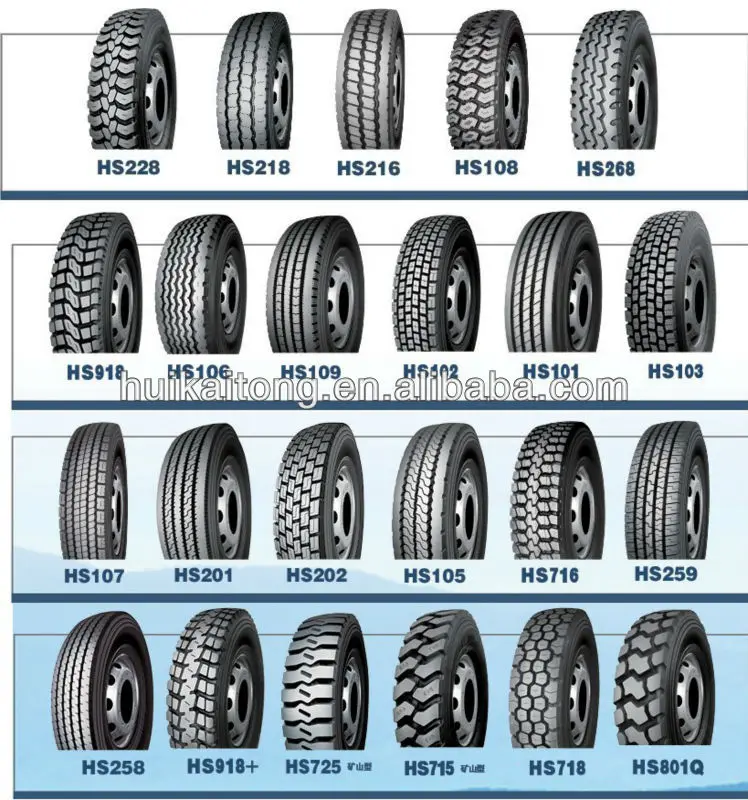 On the other hand, LT tires are intended for more severe use and heavier loaded conditions. To achieve the higher loaded capacity, higher inflation pressures are required. Both LT and P-metric load and inflation standards have been established by the Tire and Rim Association (TRA), of which Toyo Tires is a member.”
On the other hand, LT tires are intended for more severe use and heavier loaded conditions. To achieve the higher loaded capacity, higher inflation pressures are required. Both LT and P-metric load and inflation standards have been established by the Tire and Rim Association (TRA), of which Toyo Tires is a member.”
In the past, if you wanted to upgrade your truck with All-Terrain tires, for example, you would have to convert your truck from P-metric to LT-metric, simply because some tire makers back then and some still today, only produce these tires in LT-metric. Fast forward to today, the new trend is for customers to upgrade their small SUVs and CUVs for use off-road.
These vehicles are all unibody construction with relatively lightweight suspension components. It doesn’t seem right and it really isn’t right to put an LT-metric tire on these vehicles, but without an alternative, consumers will do it, to achieve the look and off-road traction they want and need. Thankfully, Toyo Tires offers tires within their Open Country lineup to fit these SUVs and CUVs in a more appropriate P-metric or Euro-metric option.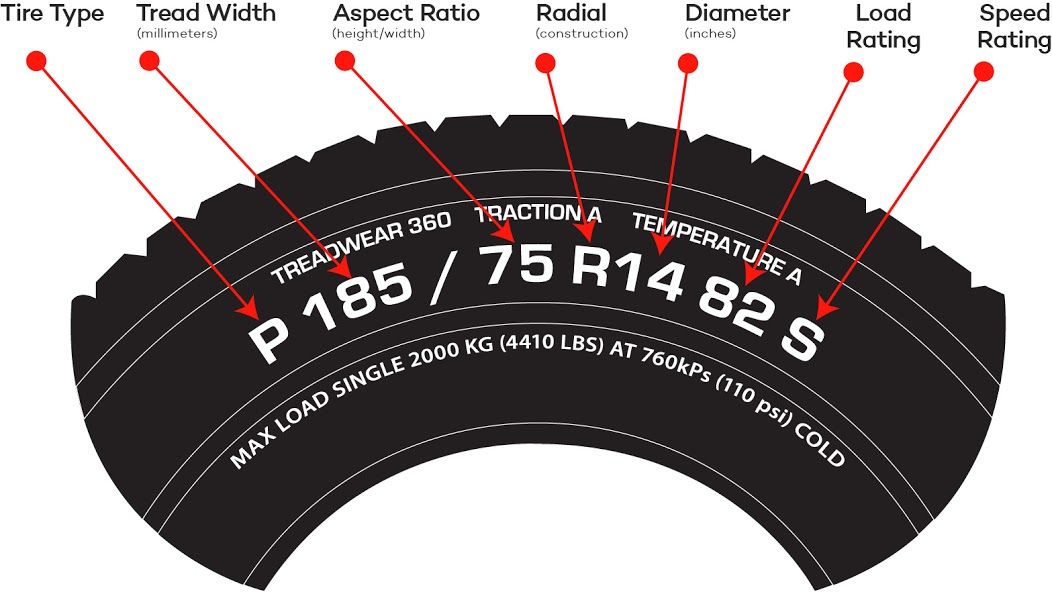 Euro Metric is more similar to P-metric construction and meets a European standard.
Euro Metric is more similar to P-metric construction and meets a European standard.
“On a 1/2-ton chassis or smaller, staying with a P-Metric allows you to retain the OE ‘placard’ air pressure that has been set by the vehicle manufacturer to support its rated load-carrying capacity,” Bergeson said. “The engineers designed and developed these vehicles around that P-metric tire, so it will ride and drive the best with the same tire. If you go bigger or change the metric standard, you will change the ride and driving characteristics.”
“Your 1/2-ton truck’s ride will be significantly better with a P-Metric or Metric tire when compared with the installation of an LT fitment on that chassis,” Bergeson continued. “Traction is better, as the contact patch will be more effective due to the correct ‘inflation-pressure to vehicle-weight’ relationship.”
Depending on your truck model and how it is built, it may have come equipped with either a P or LT tire. Always consult your vehicle’s placard and/or owner’s manual when trying to determine the correct tire for your application.
Reading the sidewall of a P-Metric (left) and LT (right) tire.
“As a rule of thumb, an LT-metric tire can be installed on a lighter weight 1/2-ton or smaller chassis, but the ride quality will generally degrade, wear and tear on suspension parts will increase and the heavier weight will change the responsiveness,” Bergeson said. “It should be noted that you are never to install a P-Metric or Euro-metric tire on any vehicle that came originally equipped with an LT-metric tire, as they are not properly load rated for such a chassis.”
Another big difference between an LT and P-Metric tires is how it will hit your wallet. The cost of the P-metric is lower than the LT tire of the same size. Sticking with a P-Metric tire may make more sense and have some additional cost savings.
Everyone has been there once before, wanting to put the largest possible tire on their truck, get everything installed, go to turn the wheel, and you end up back under the truck trimming and cutting away to make it clear.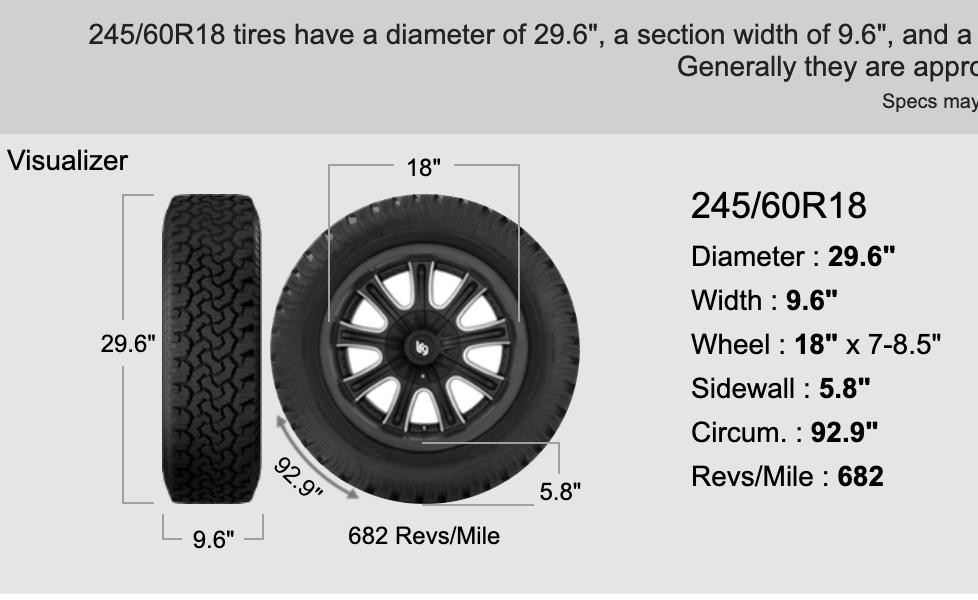 I decided that I was unwilling to cut anything on my brand new beautiful 2019 Silverado, but I wanted a larger tire.
I decided that I was unwilling to cut anything on my brand new beautiful 2019 Silverado, but I wanted a larger tire.
To determine the size that I needed for my truck I used Toyo’s Find Tires section on their website where I was able to determine which plus size was right for me. The chart below breaks down what different plus sizing options are out there and how they are calculated.
Plus Zero: If the wheel diameter remains the same and only the width is increased it is called “Plus Zero.”
Plus One: If the wheel size is increased by one inch it is “Plus One.” This sizing mounts tires with an increased section width and a lower aspect ratio on wheels of a larger diameter. A Plus One fitment for a car with 16-inch original equipment wheels would use 17-inch wheels.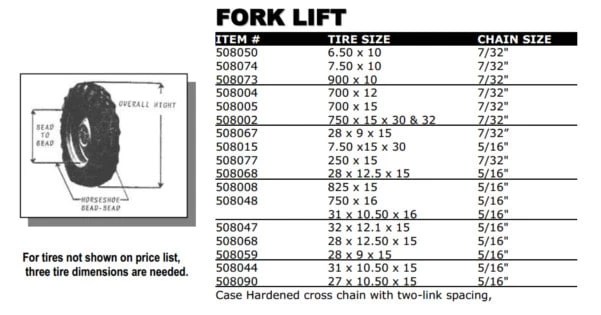 As a general rule of thumb, Plus One sizing:
As a general rule of thumb, Plus One sizing:
Plus Two: If the wheel size is increased by two inches it is “Plus Two.” For example, a Plus Two fitment for a car with 16-inch original equipment wheels and tires would be 18-inch wheels and tires. As a general rule of thumb, Plus Two Sizing:
Plus Three: If the wheel size is increased by three inches it is “Plus Three.” For example, a Plus Three fitment for a car with 16-inch original equipment wheels and tires would be 19-inch wheels and tires. As a general rule of thumb, Plus Three Sizing:

“On Toyo’s website one the Find Tires tab people can search a specific truck by its make, year, model, and even trim to see what was originally specified as an OE size for that chassis,” Bergeson explained. “A Plus Zero reference means a larger size tire is available to properly fit the OE wheel of the truck. That can allow for a slightly larger footprint and/or diameter while all remaining within spec for that truck.”
“In some cases, Toyo uses the term ‘Right Sizing’ to describe a tire developed specifically to fit an OE wheel, but to better fill the fender openings while giving it a more aggressive look and feel,” Bergeson continued. “One example is a P285/55R20 114T size of the Open Country A/T II. This P-metric tire is only offered by Toyo Tires and has an even more aggressive shoulder and sidewall and is a great look and perfect size for trucks such as an F-150, Tundra, Sequoia, and Silverado.”
To correct the Silverado's factory rake we installed Baja Kit's leveling kit.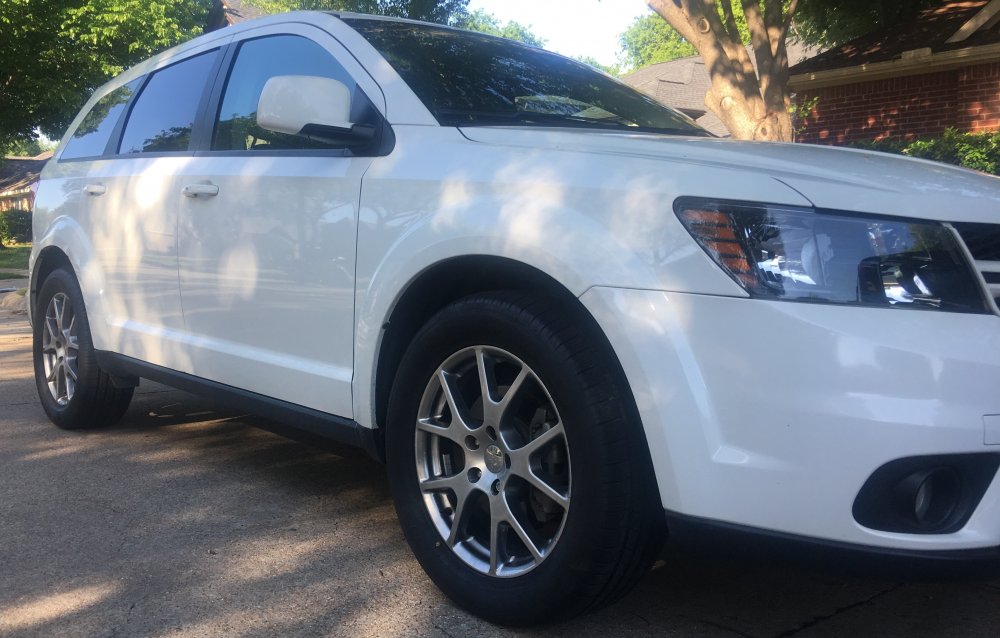 It was super simple to install and we had both sides done in under an hour.
It was super simple to install and we had both sides done in under an hour.
“The tire finder on our website takes into account your vehicle’s OE tire size and its maximum load capacity at placard pressure when making replacement tire recommendations.,” Bergeson said. “The options listed, are based on tire sizes we offer in both OE and plus fitments that will meet or exceed the loaded capacity of your OE tires. When we refer to plus fitments, Plus 1 means the tires will fit a wheel that is one-inch larger in diameter than OE. And depending on what is available, there can be sizes up to Plus Three or greater while maintaining an outside diameter that properly fits the OE wheel well and/or chassis height.”
To be able to get a little larger tire on the truck I installed a leveling kit. The Baja Kits leveling kit was installed underneath the factory strut assembly and in a matter of an hour, I was able to remove the factory rake. It was not a huge lift, but that was not what I was looking for with this truck, I simply wanted it to visually look good.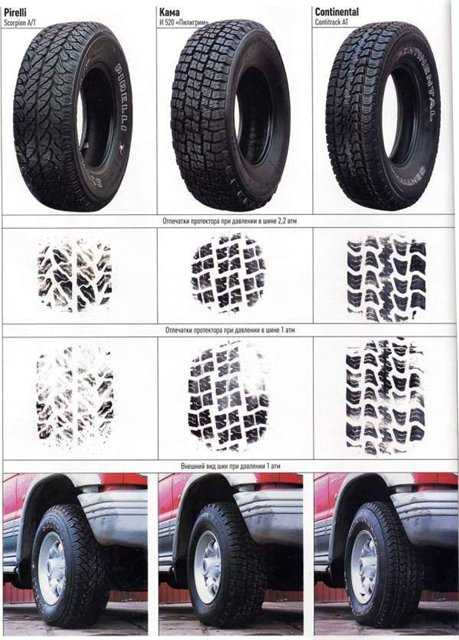 This is very common in the light-truck market, which is why “leveling” kits are so popular.
This is very common in the light-truck market, which is why “leveling” kits are so popular.
Toyo’s size references in the Find Tires section of their website are based on the OE chassis heights for all trucks. For that reason, too large of a tire like a 40-inch tire would not be found in those size recommendations as the truck would need to be lifted to accommodate that outside diameter. For custom builders, each individual tire section on the website has an expandable chart that provides all dimensions, weights, load and speed ratings of tires in order to determine the proper fitment in those situations.
Having the information I needed I picked our tire. I went with an LT285/75R17 Open Country M/T, which is roughly a 34-inch by 11.5-inch tire. The decision to go with this size was done by using the information provided by Toyo and the idea in my mind on what I wanted the truck to look like in the end.
With the new wheels and tires loaded I headed to the Woodcrest Ramona Tire location to get the Open Country M/Ts mounted and on the truck.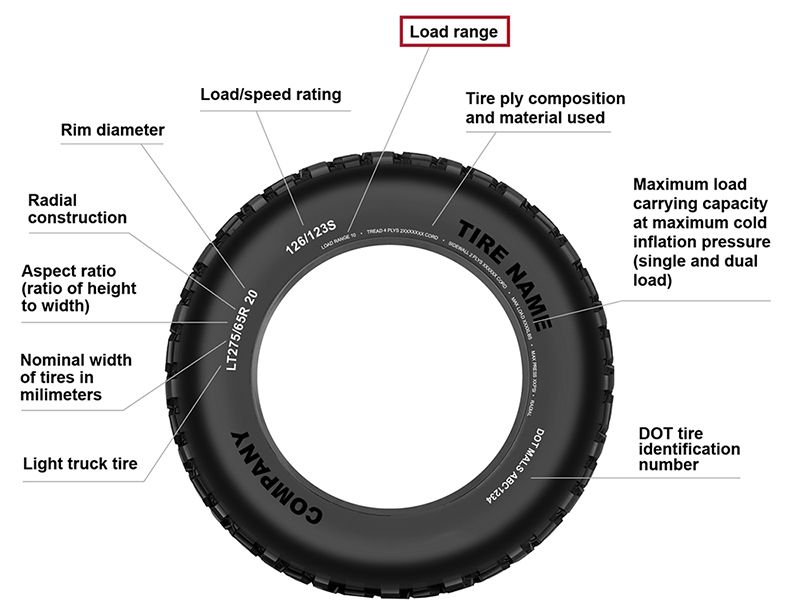 The factory 31-inch tires looked tiny on the truck from the factory and these new tires would fill the wheel well just right.
The factory 31-inch tires looked tiny on the truck from the factory and these new tires would fill the wheel well just right.
The technician at Ramona Tire made quick work of mounting the tires to the wheel, and before I knew it, they were on the truck. I also had the truck aligned to make sure that after adding the leveling kit everything would not create any uneven wear.
A good note to make when installing a leveling kit and brand new tires or any time the suspension is touched on a vehicle is to make sure to get an alignment. Having the alignment specs out of spec can create uneven wear on the tires and cut the life of the tires short.
In the end, I couldn’t be happier with the decision I made for the truck as it came out exactly how I wanted the first time with no rubbing. I am able to turn the steering wheel lock to lock with no issues. The ride of the truck is still as good as it was driving off the lot and I can still squeeze into those low hanging parking structures.
Before and after, what a difference a set of wheels and tires make on a truck like our 2019 Chevrolet Silverado.
For more information on Toyo Tires and to find a tire for your vehicle be sure to visit their website.
While some drivers increase the size of their wheels or fit taller tires for a bigger and bolder look, other drivers may want to fit their car with smaller tires for cost or aesthetic reasons. Smaller tires might seem like a smart choice, but will your car or truck be able to handle smaller tires? Learn about the pros and cons of fitting smaller tires to your car or truck and why it's best to stick to the manufacturer's recommendations.
SMALLER TIRES: WHAT IS THE BENEFITS?
In some cases, smaller tires can provide less sidewall roll when cornering, provide better handling, better traction, and transfer more torque to the ground because the wheels are smaller in diameter.
Because smaller tires spin faster, they require higher engine speeds than larger tires to run at the same speed. Also, smaller tires can provide more pulling power than larger tires because they can transfer most of their torque to the ground, but the engine can spin faster and run hotter while trying to stay at that speed.
Smaller tires can enhance your vehicle's aesthetics by lowering it to the road. However, fitting smaller tires to your car or truck for aesthetic purposes may affect the performance of your vehicle. Before choosing smaller tires for your car or truck, stop by your local service center and tire specialists will help you select the best options for your vehicle according to the manufacturer's recommendations.
SMALLER TIRES: WHAT ARE THE DISADVANTAGES?
If your vehicle manufacturer does not list an option with smaller tires, it may not be in your best interest to switch to smaller tires.
Replacing smaller tires may require a lowering kit or springs, arms, brackets, anti-roll bars and dampers. With all of these modifications, you may experience interference with your car's sensors and computers - plus, a hefty price tag.
With all of these modifications, you may experience interference with your car's sensors and computers - plus, a hefty price tag.
Smaller tires can cause inaccurate information from your speedometer and odometer, cause shifting problems, cause the anti-lock brake system to malfunction, and even cause the check engine light to come on. Smaller tires can also cause problems with safety systems, as well as issues with proper wheel alignment.
Smaller tires can lower your vehicle's ride height, causing it to scrape, collide, or sink below objects that would otherwise need to be cleared, such as speed bumps, parking entrances, uneven intersections, and road debris.
In addition, the extra torque from smaller wheels can cause tires to age and wear faster because they spin faster and engage more than a mile more on the road than the tire size recommended by the manufacturer. Similarly, if the tire's overall diameter remains the same but the rim size is smaller, you need to be careful to make sure there is still clearance in the vehicle's hardware such as brake discs and calipers to allow the wheel to spin.
IS IT POSSIBLE TO BUY SMALLER WINTER TIRES?
To avoid the expense of winter tires—especially since manufacturer-recommended sizes can go up to 19 inches or more—some drivers are turning to smaller winter tires to improve traction in cold weather. Unfortunately, the price of winter tires does not depend on the tire size. For example, 16" tires may be more expensive than regular 17" tires.
If you are planning to buy smaller winter tires to save money, you may run into the same problems as installing smaller non-winter tires on your car. If you're looking to save money on winter tires, consider purchasing a quality pair of winter tires according to your car manufacturer's sizing guidelines that you can reuse over several winter seasons.
GET THE RIGHT SIZE TIRES.
Can I put smaller tires on my car? Maybe. But should you? Probably no! While smaller tires may have some benefits, the risks of malfunctioning your vehicle's systems should be considered.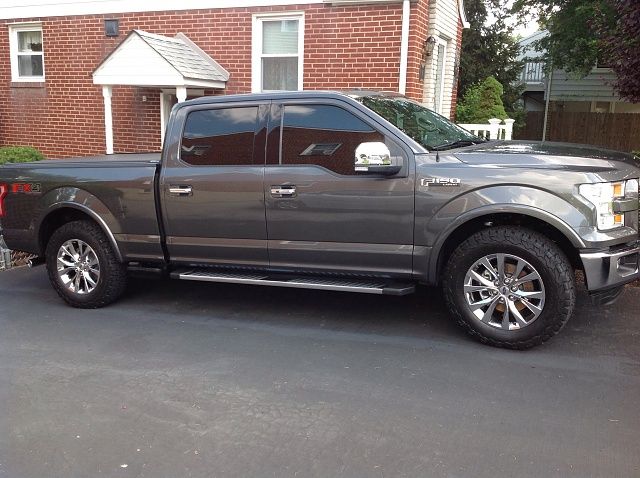 Following the vehicle manufacturer's recommendations results in the best expected results for your vehicle's performance, handling and safety - whether you're looking for new truck or passenger car tires, you can look into a tire shop in Bucharest for a professional recommendation.
Following the vehicle manufacturer's recommendations results in the best expected results for your vehicle's performance, handling and safety - whether you're looking for new truck or passenger car tires, you can look into a tire shop in Bucharest for a professional recommendation.
If you plan to install smaller tires on your vehicle, start by checking the manufacturer's recommendations in your owner's manual.
2021-08-09
In NSW you are allowed to fit wheels that are up to 26mm wider than the manufacturer's listed wheels without having to notify the road and traffic authority (RTA). Wheel track extension (distance between left and right wheel) cannot be more than 25mm outside manufacturer's specification.
it depends. wheels and tires are not interchangeable words . Tires are part of the wheel setup.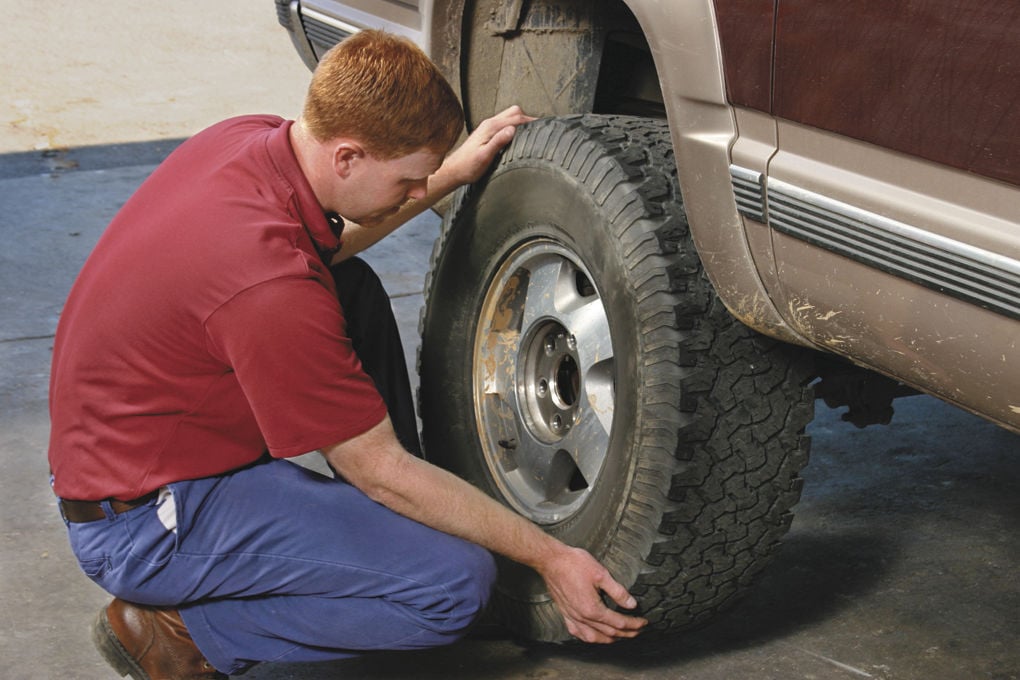 For example, your car has a certain size of rims, but you can buy different tire sizes to fit those rims as long as the middle of the tires is the right size.
For example, your car has a certain size of rims, but you can buy different tire sizes to fit those rims as long as the middle of the tires is the right size.
How to thin your tires
Expert Answer: Like , since the bolt pattern is the same as and you have enough room around your existing tires for a larger size, then yes, you can upgrade to a 15" wheel and tire.
Due to the size of the tires with a lower tire size with a larger diameter wheel size, speedometer and odometers, if at all, only a little needs to be changed.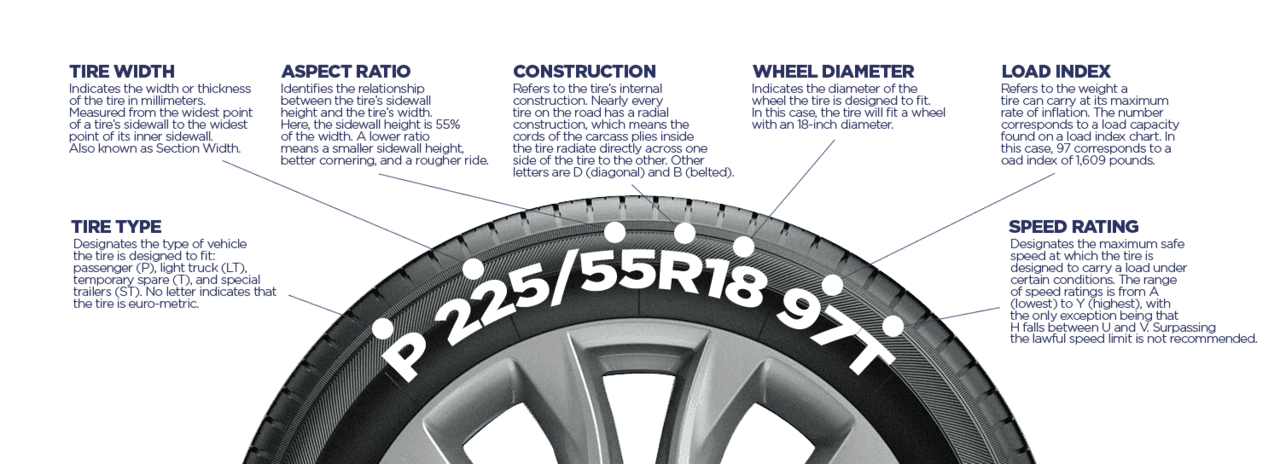 …but swapping out the stock 17" alloy wheel for an 18" or 19" alloy rim will add weight - if it's not the expensive, lightweight type. Big wheels cost more than money.
…but swapping out the stock 17" alloy wheel for an 18" or 19" alloy rim will add weight - if it's not the expensive, lightweight type. Big wheels cost more than money.
01. Are 225 and 235 tires interchangeable? Yes , they are. However, this is only possible if your car's rims can take a larger millimeter.
rim size won't matter as long as you keep the overall outside diameter of the tire the same as your factory tires. If your factory rims are 18" with a meaty tire, you can get a 22 with a lower tire and keep the same overall diameter.
Yes, you can . But only if the rims on your car can accommodate tires that are 10-20 millimeters wider. Keep in mind that wider wheels require more fuel due to their increased rolling resistance. Again, wider tires are more expensive than narrower ones because they need more rubber during construction.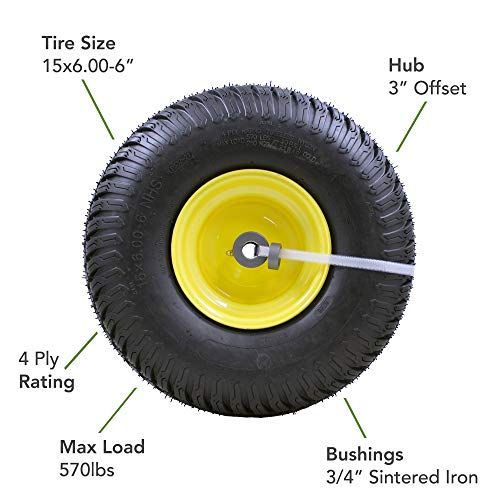
Yes, poke will be illegal in all states. But if it's not that much, and you've got some stretch (and also to have an overall lite car, and don't drive like a handle, or you mean a handle for Rouzeers), you should be fine to run a little. But yes, it's technically illegal and you may be defective.
Larger wheels generally result in a rougher ride. … When changing the original wheels and tires of a machine, a general rule of thumb is that you can go up or down one inch on . For example, if your car is currently running on 17" wheels, you can downsize to 16".
Hi Martin903 since this is an Australian page, is definitely illegal here in NSW AU . We are not allowed to have any tire protruding beyond the fenders.
Large tires were for off-road use or specialty gear.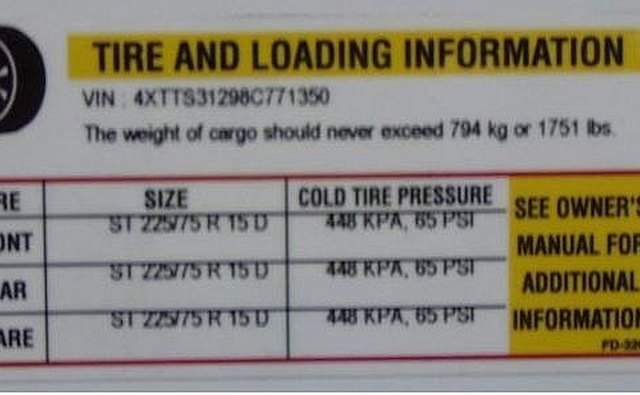 … Big tire size can make your truck look and perform better in some situations. But changing tire sizes too much can affect speedometer and odometer accuracy, handling, steering response, and safety issues like tire load capacity.
… Big tire size can make your truck look and perform better in some situations. But changing tire sizes too much can affect speedometer and odometer accuracy, handling, steering response, and safety issues like tire load capacity.
With 3 inch rise you will be fine. They are almost without a doubt, keep in mind that the tires are 285/70/R17 wide. Please be aware that 285mm wide tires will rub against stock rims.
For example, larger tires reduce your fuel economy because they are heavier, while smaller tires improve fuel efficiency. Larger tires also have higher rolling resistance than smaller tires, which means they require more resistance and effort to get them to roll. … Tires can also affect your fuel economy.
registered. The 20's are nice to tow the with. .. big wheels are more stable than smaller ones if the overall tire size stays the same. My 20" terragraphs are rated higher than E-rated factory tires.
.. big wheels are more stable than smaller ones if the overall tire size stays the same. My 20" terragraphs are rated higher than E-rated factory tires.
Vehicle equipped with 16" edge and tire package can be changed to 15" rim and tires. … The rolling distance changes if the overall diameter of the tire and wheel combination changes and this results in a non-thin speedometer.
Smaller 16" wheels come with large sidewall tires that act as cushions against sharp edges on roads such as ruts and potholes. While the 17-inch tires look a lot better than the , the shorter sidewalls aren't as good at filtering out road shocks.
235 will be width if the rim is the correct offset. You will lose ~1.4 inches in diameter though as you go to 55. Your speedo will be off.
The difference in the measurement of the two tires is solely in the sidewall aspect ratio, so /65 tires will have a larger sidewall (note that the number is 65% of the width, not the 65th, i.